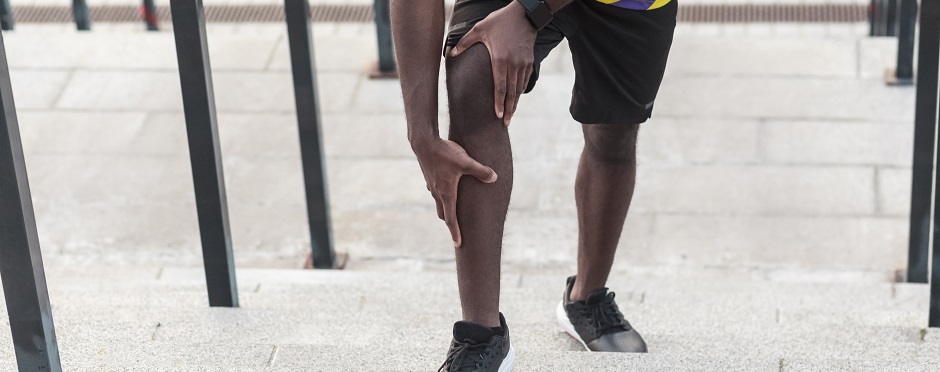
6 Exercises to Help Minimize an Injury to the ACL
Leave a CommentWith ACL injuries on the rise in young athletes, it is as important as ever to improve the strength in the lower limbs as a means to prevent an ACL tear.1 The average time of recovery after an ACL tear and subsequent surgery is typically six to nine months, and can set back an athlete for a much longer period of time than that.2 Biomechanics and strength are just a few pieces of the puzzle that can help prevent an injury. Proper rest, recovery, sleep, and nutrition can also help minimize the risk of an ACL tear from happening. The following are a list of strengthening exercises that address important aspects of an ACL prevention program.
1. Split Squat
There are several variations that can be used with this exercise, all of which are great at single-limb strengthening and proprioceptive control of the knee. The main variation shown below is a rear-foot elevated position, and this will place the stress of the workload on the forward leg, with the back leg contributing to balance.
This can be done with just bodyweight, but can also be loaded in a myriad of ways: weight vest, dumbbell/kettlebell, barbell, medicine ball, and much more. If balance is an issue, I suggest using one or two hands to stabilize yourself by grabbing onto a stable surface. Other variations include front-foot elevated, forward torso lean for increased glute contribution, a more upright posture for increased quadriceps contribution, weight held in the opposite hand of the working leg to increase gluteus medius contribution, etc.
- With your feet underneath your shoulders, step one foot forward as wide as you can while keeping both heels planted on the ground with toes pointed forward.
- You can place your hands on your hips and maintain an upright torso as you bend both your knees, allowing your back heel to come off the ground as you shift your weight down into the heel of the front leg.
- Lower until your back shin and front thigh are parallel with the ground. Pause, and drive through your front heel to stand back up to the start position.
- Perform 3-5 sets of 8-15 repetitions per leg.
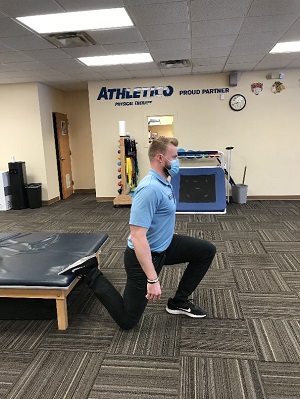
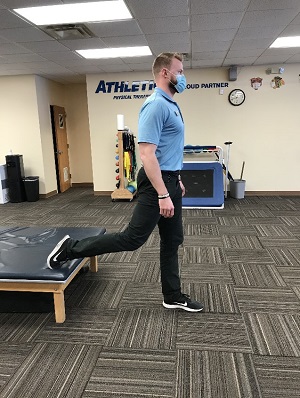
2. Side Plank
The majority of motion that a knee moves through is in a hinge-joint pattern. It moves primarily through flexion and extension (there are a few ways it rotates, but that movement is minimal). The control of the “side-to-side” knee motions mainly comes from the hip, which has a capacity for larger ranges of motion. The gluteus medius is one of the main muscles of the hip responsible for helping to control this motion, both statically and dynamically. The side plank is an easy exercise to work on concurrent gluteus medius and core control, which will contribute to knee control during an assortment of activities.
- With this exercise, you want to push your hips as high as you can, and keep your hips and shoulders stacked in an even line. One of the biggest form mistakes I see is a lean forward of the hips and torso, which decreases the effectiveness of the exercise.
- Complete 5-10 repetitions, holding anywhere from 10-30 seconds; start at the low end if you are new to the exercise.

3. Seated Hip Abduction
While the side plank was able to train the gluteus medius muscle in a static position, this exercise will allow you to move the muscle through a controlled range of motion to help increase its size, control, and work capacity. Work capacity is one of the most important components because it allows you to control your knee for a longer duration during practice and competitions due to less fatigability.
- While seated, place a resistance band around your thigh muscles as pictured below.
- Keep your feet together, and move your knees as far away from each other as you can, keeping the motion under control.
- 2-4 sets of 20-30 repetitions works well here for improving all the qualities we want in the gluteus medius muscle.
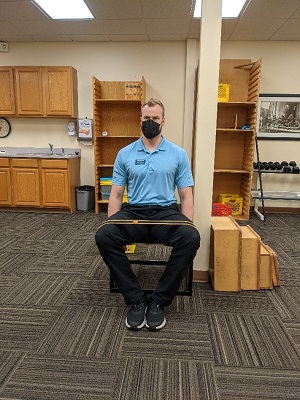
4. Romanian Deadlift
An often overlooked muscle in a strength training program is the hamstring group. This muscle is important for knee stabilization, contributes to hip extension, and plays a big role in the eccentric control of knee extension. An easy way to load the hamstrings is with a Romanian Deadlift, or RDL for short. This movement is essentially a hip hinge, so the glutes will get some work as a byproduct.
- Focus on keeping your back straight, keeping your knees loose, and keeping your shins perpendicular to the ground.
- The movement is done by pushing your hips backwards and allowing your torso to bend forward to match the movement, when done right you should not feel any unwarranted stress in your low back.
- This movement can be loaded heavier once you have a feel for the form, 3-5 sets of 6-10 repetitions.
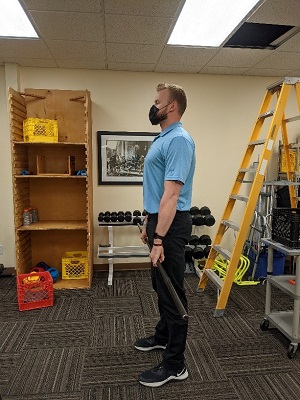
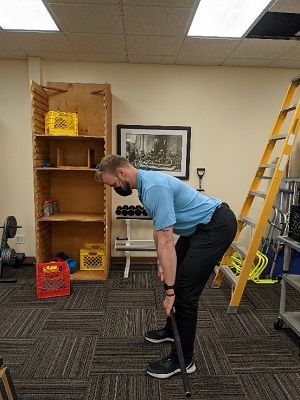
5. Leg Curl
Since the RDL works the hamstrings in a hip extension pattern, it mainly works the upper portion towards the proximal insertions (closer to the hip). This means that you will also need to do some leg curls to work the distal portion of the hamstrings. A seated leg curl machine will work well, otherwise you can use a band to complete the exercise.
- Tie the ends of a resistance band to a sturdy object, such as an exercise machine or piece of furniture. Sit in front of the band. Place the loop around one of your heels and keep your feet together.
- Bend your knee to pull your heel back, stopping when you can’t pull any further.
- Extend your knee to return to starting position.
- Higher repetitions are a good choice here to ensure hypertrophy and work capacity increase, 3-4 sets of 12-20 repetitions.
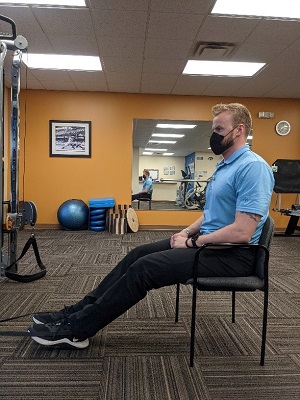
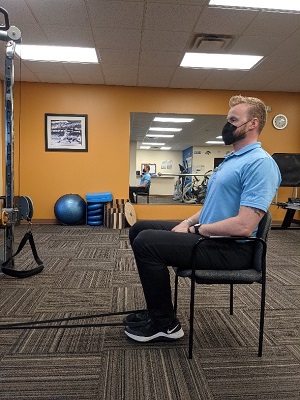
6. Hip Thrusts
This is a great exercise for loading the glutes in a hip extension pattern. This movement also lends itself well to allow safety and control of movement to let you lift more weight for more reps.
- Position the bar on your hips, and your upper back elevated on a bench.
- Keep your core tight through the motion to decrease lumbar spine contribution to the motion. Controlled motion with a slight pause at the top is recommend when performing repetitions of this exercise, and make sure not to overextend at the top.
- Perform 3-4 sets of 8-15 repetitions.
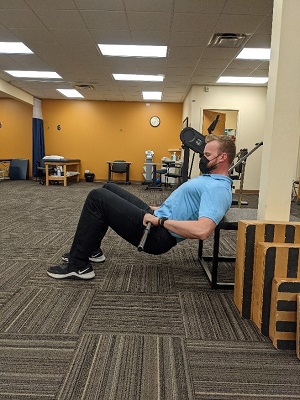
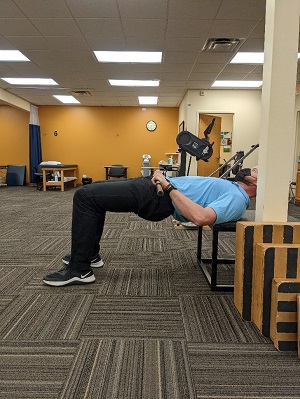
The exercises listed above are a great start to the strengthening portion of a prevention program. Focus should be on form and control of each exercise. As mentioned above, a prevention program should also include landing and cutting exercises with a focus on proper biomechanics.
Athletico’s ACL 3P program was created to help reduce the number of knee injuries in sports and to improve the outcomes for athletes who do experience knee injuries. You can schedule an ACL risk assessment with one of our specially trained clinicians who will assess your strength and mechanics and, if appropriate, begin treatment to help reduce the risk of injuring your knee.
Find an ACL Specialist Near You
The Athletico blog is an educational resource written by Athletico employees. Athletico bloggers are licensed professionals who abide by the code of ethics outlined by their respective professional associations. The content published in blog posts represents the opinion of the individual author based on their expertise and experience. The content provided in this blog is for informational purposes only, does not constitute medical advice and should not be relied on for making personal health decisions.
References:
1. Cynthia R. LaBella, William Hennrikus, Timothy E. Hewett, COUNCIL ON SPORTS MEDICINE AND FITNESS, and SECTION ON ORTHOPAEDICS Pediatrics May 2014, 133 (5) e1437-e1450; DOI: 10.1542/peds.2014-0623
2. “ACL Tear: Symptoms, Recovery & Treatment.” Cleveland Clinic, 2020, my.clevelandclinic.org/health/diseases/16576-acl-anterior-cruciate-ligament-tears.
